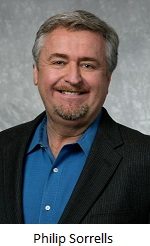
“We have products and solutions that go from the top of the cell tower to the bottom and everything in-between, including fiber connectivity,” says CommScope VP Strategic Marketing Philip Sorrells.Currently, one of the biggest problems the company is helping tower and wireless customers solve is enabling mobile operators to add capacity to their networks as user demand for bandwidth continues to increase.

“Putting up an antenna for every one of those frequencies on a tower would be heavy and not practical.” Yet, adding all that capacity with additional frequencies is important for mobile operators. That’s why they need CommScope’s antenna and RF conditioning technology to enable capacity to be added to already strained towers.

But extra capacity can also create the potential for interference, both self-interference and with other wireless systems. “Or an operator’s own service, on one cell side, can create interference with their own service on another side. That kind of interference in a high, frequency-rich environment is a challenge.”
That’s where a CommScope interference-mitigation filter comes into play. CommScope engineers work with their customers’ engineers to understand what frequencies are being used and develop filtering technology that mitigates the downside of the rich frequency environment. This “helps them capitalize on their frequency investment more effectively,” says Sorrells.
How the antennas, radios and other gear is mounted to the tower is key to performance. Mounting systems need to be stable, durable and probably most important, not add undue weight and wind load to the structure.
CommScope’s Generation 2 sector frame-mounts are designed to provide high-performance, secure stable performance; they solve problems for both the tower owners and operators, according to Sorrells.

When new radios are added at the top of the tower to carry power to the structure, typically that involves larger diameter, heavier gauge copper cable. The PowerShift smart power supply helps regulate how power is managed at the site “so you can feed an increased number of radios but still use the same size or even smaller size copper.”
The other initiative, for the so-called “Cloud-RAN” architecture, centers on how the components of the radio access network are de-compartmentalized so operators can allocate their resources more efficiently. Noting that this is an important topic being discussed in the industry, CommScope is exploring how different fiber connectivity solutions can support how Cloud-RAN is enabled. “If you move baseband processing from the radio into a separate processor, how does that get physically implemented? These are the kind of future technology developments we’re working on,” says Sorrells.
For more information on CommScope, go to: www.commscope.com
By Leslie Stimson
October 13, 2016




Reader Interactions